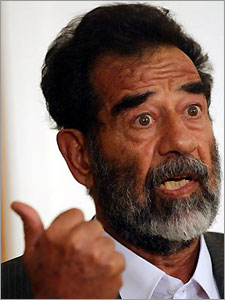The Therapy Sessions
Wednesday, June 29, 2005
Ireland points the way
How to rescue (most of)Europe from the economic doldrums? They need not look to us. Ireland illustrates the point just as well.
Thomas Friedman:
Here's something you probably didn't know: Ireland today is the richest country in the European Union after Luxembourg.
Yes, the country that for hundreds of years was best known for emigration, tragic poets, famines, civil wars and leprechauns today has a per capita G.D.P. higher than that of Germany, France and Britain. How Ireland went from the sick man of Europe to the rich man in less than a generation is an amazing story. It tells you a lot about Europe today: all the innovation is happening on the periphery by those countries embracing globalization in their own ways - Ireland, Britain, Scandinavia and Eastern Europe - while those following the French-German social model are suffering high unemployment and low growth.
Ireland's turnaround began in the late 1960's when the government made secondary education free, enabling a lot more working-class kids to get a high school or technical degree. As a result, when Ireland joined the E.U. in 1973, it was able to draw on a much more educated work force.
By the mid-1980's, though, Ireland had reaped the initial benefits of E.U. membership - subsidies to build better infrastructure and a big market to sell into. But it still did not have enough competitive products to sell, because of years of protectionism and fiscal mismanagement. The country was going broke, and most college grads were emigrating.
"We went on a borrowing, spending and taxing spree, and that nearly drove us under," said Deputy Prime Minister Mary Harney. "It was because we nearly went under that we got the courage to change."
And change Ireland did. In a quite unusual development, the government, the main trade unions, farmers and industrialists came together and agreed on a program of fiscal austerity, slashing corporate taxes to 12.5 percent, far below the rest of Europe, moderating wages and prices, and aggressively courting foreign investment. In 1996, Ireland made college education basically free, creating an even more educated work force.
The results have been phenomenal. Today, 9 out of 10 of the world's top pharmaceutical companies have operations here, as do 16 of the top 20 medical device companies and 7 out of the top 10 software designers. Last year, Ireland got more foreign direct investment from America than from China. And overall government tax receipts are way up.


